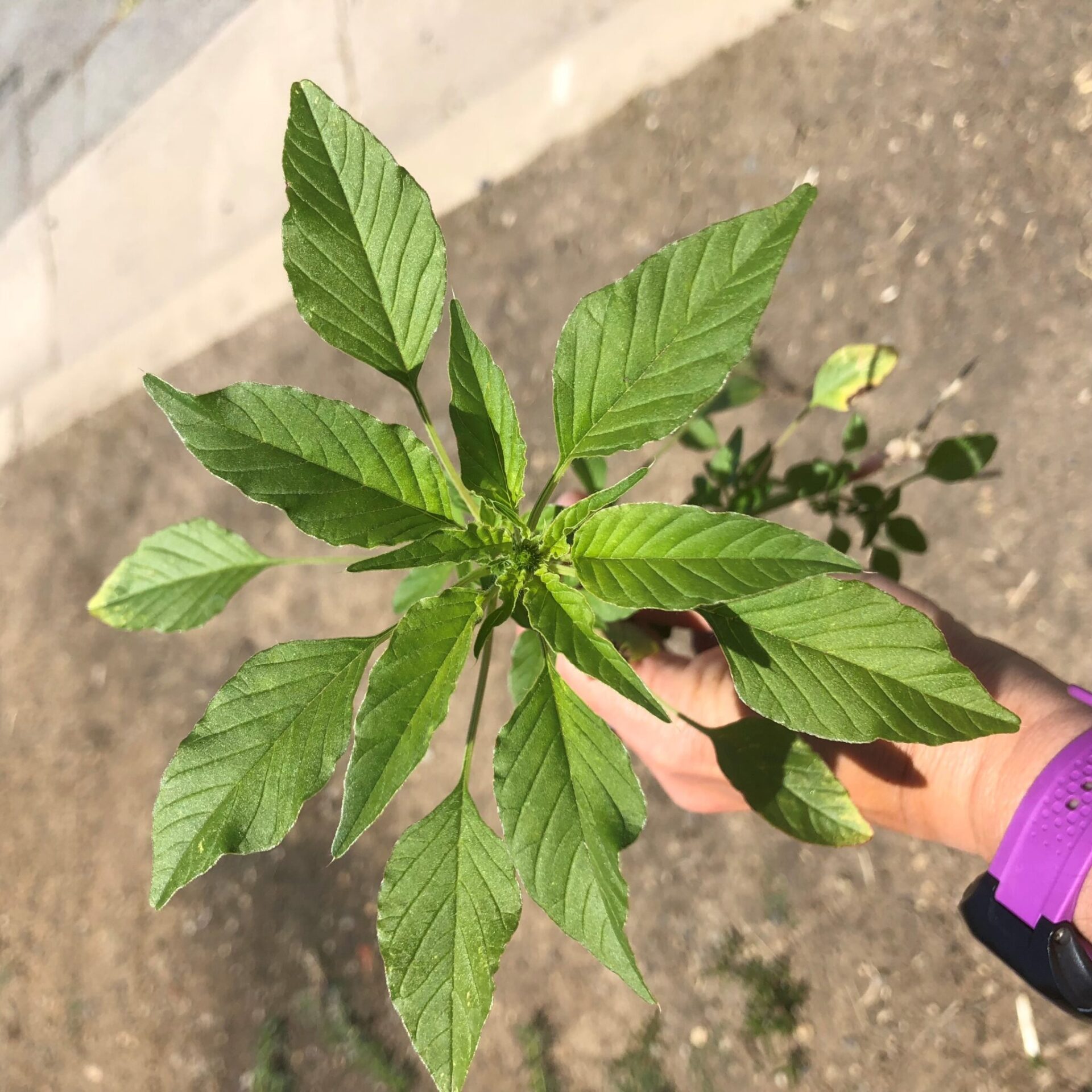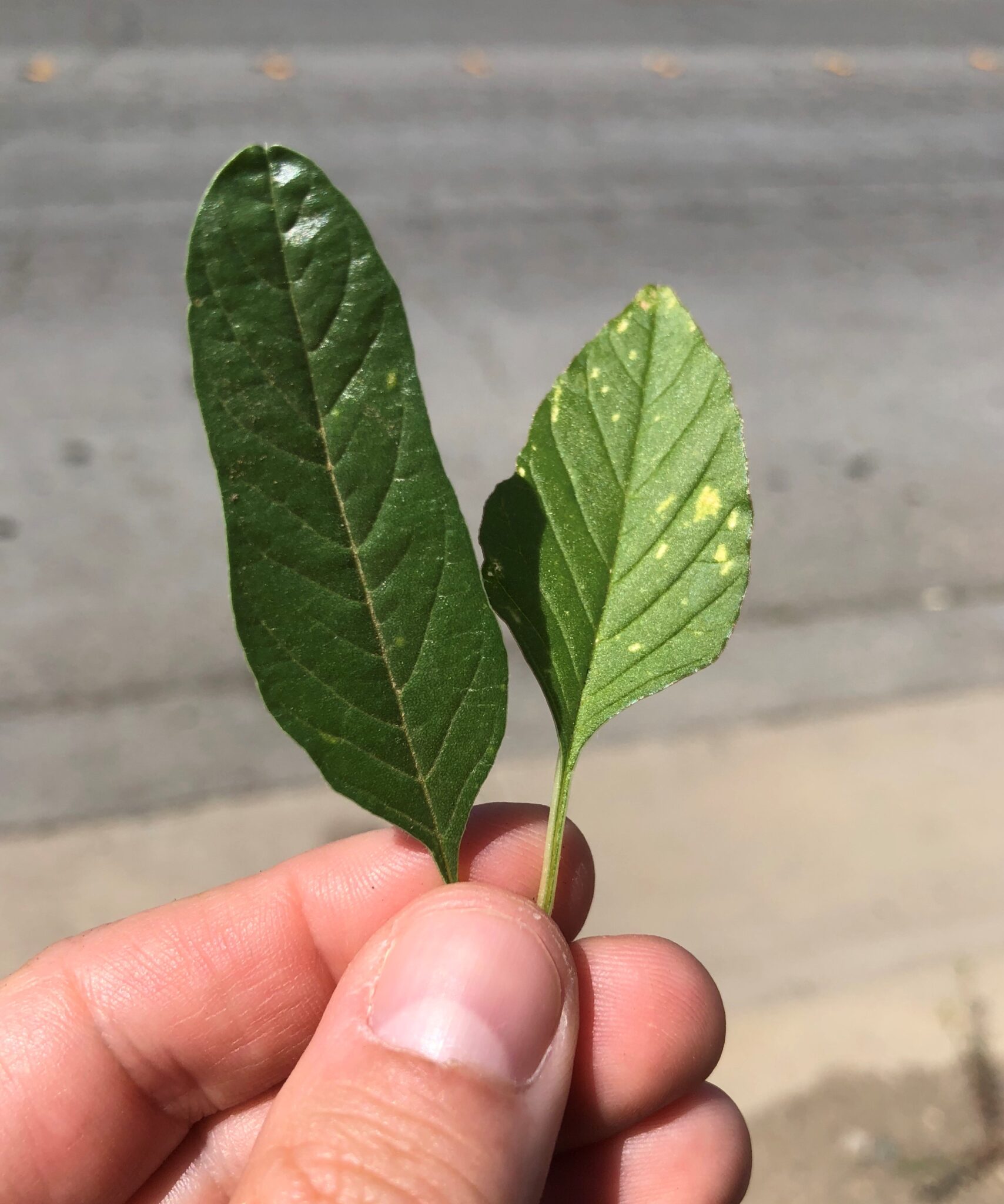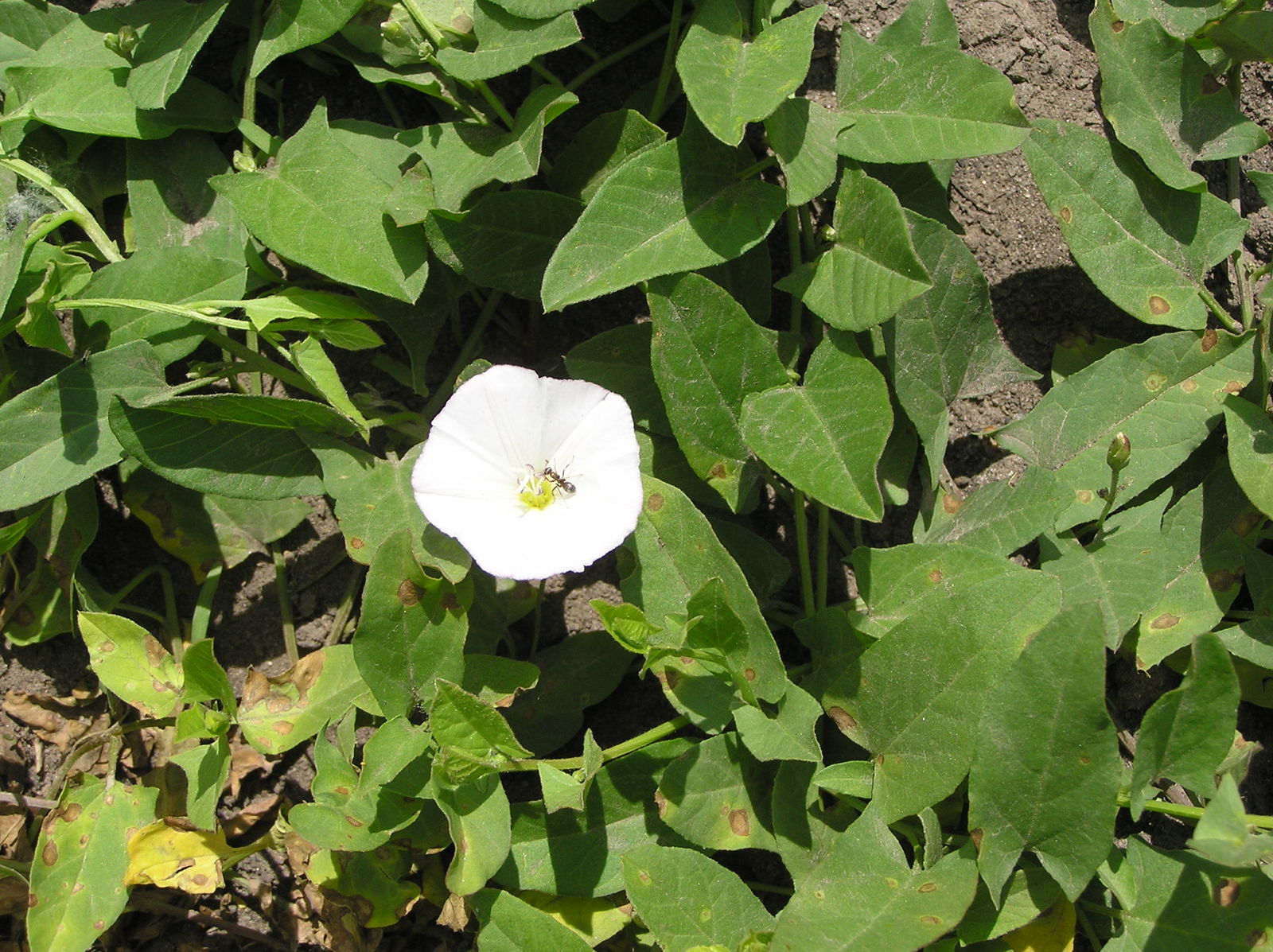
Sunlight and water are major drivers of young tree nut growth, but they also contribute to problematic weed populations that can steal nutrients and water from vulnerable young trees.
Fewer effective herbicide options for growers and increasing herbicide resistance in some formulations can be roadblocks to effective weed control in orchards, making it important for growers to up their game. Identifying weeds in their early stages of growth, knowing if they are perennial or annual and timing herbicide applications when they will be most effective are strategies recommended by weed control experts.
Drew Wolter, Almond Board of California’s new senior specialist in pest management, said changes in weed populations plus new, invasive weed species pose challenges for tree nut growers every year.
Drought can cause weed populations in an orchard to shift, Wolter said. Fertigated orchards can have salt build up in the soil and species that are salt- and drought-tolerant can become more prevalent over time. New, invasive weed species can spread unless control measures are developed quickly. Weeds are easier to control in early stages of growth, but correct identification of the species and using timely and appropriate control is important, Wolter said.
Some of the most challenging weed species currently found in nut orchards in the San Joaquin Valley include Horseweed or mare’s tail (Conyza canadensis), field bindweed (Convolvulus arvensis) and Italian ryegrass (Lolium perenne ssp. Multiflorum). There are a few new amaranth species in California that growers should keep an eye on, namely Palmer amaranth (Amaranthus palmeri) and Waterhemp (Amaranthus tuberculatus var. rudis)
Horseweed or Mare’s Tail
Horseweed is an older species, and the biology of the plant makes it particularly difficult to control. Horseweed produces an enormous number of seeds that can be dispersed over a long distance. This weed also has two different germination periods, fall and spring, and widespread herbicide resistance.
Wolter said horseweed only reproduces with seed that is wind dispersed, and due to its feather-like appendages, it can be carried long distances. Fortunately, studies have shown that the seed is only viable for about three years.
Early management is key to controlling horseweed in an orchard. As the season progresses, horseweed goes from a rosette stage of growth to bolting with a central stem and rapid growth.
Wolter said that there have been confirmed cases of herbicide resistance to EPSP synthase inhibitors and PSI Electron Diverter, making management much more difficult. He advises a sound preemergent program and postemergent alternatives for glyphosate-resistant biotypes. Postemergent alternatives for glyphosate resistance include saflufenacil, glufosinate and 2,4-D. Preemergent recommendations are isoxaben, simazine, rimsulfuron and flumioxazin.

Field Bindweed
Field bindweed, a member of the morning glory family, produces trumpet-shaped, white to pinkish flowers. Bloom occurs from spring through fall. Wolter emphasized that once field bindweed has invaded an orchard, it is one of the most difficult weeds to control.
Its persistence is due to a vigorous horizontal rhizomatous system that can give rise to new roots and shoots once aboveground vegetative matter is knocked down or when roots are disturbed. This weed can wind up tree trunks, hide under protective trunk cartons and work its way into irrigation emitters. Seeds can last up to 60 years dormant in the soil.
Again, a sound preemergent and postemergent program is necessary. Since the seed are so long-lived, the goal should be to make timely applications that gradually deplete the seed bank.
Applications should target this species phenology. Due to the rhizomatous system, the timing of herbicide applications is important. Systemic herbicides such as glyphosate should be applied when the plant is in its full bloom stage. During this stage of growth, the roots’ carbohydrate reserves are at their lowest and the sugars produced in the leaves are being moved downward to the root system. By applying a systemic herbicide at this stage, the herbicide will be translocated with the sugars down to the rhizome system. That does not necessarily mean that management practices should not take place earlier as well. Early season treatments provide a reduction in seed production and plant vigor.
Italian Ryegrass
Italian ryegrass is a winter annual or biennial that easily hybridizes with closely related plants (same genus), making it difficult to identify and tough to develop a specific management program for this species. Most seed germinates in fall, but under the right environmental conditions, this species can germinate year-round.
The genetic diversity of the species has led to numerous cases of resistance in California. Currently, there are a total of five different modes of action (MOAs): ACCase inhibitors,
ALS inhibitors, EPSP synthase inhibitors, Glutamine Synthetase inhibitors and PSI Electron Diverter.
Palmer Amaranth
Palmer amaranth is a tall, erect summer annual broadleaf weed that has become a significant issue in tree nut orchards in recent years. It can be especially abundant in young or widely spaced orchards and can be found on the outer edges and skips in mature orchards. It is a prolific seed producer, Wolter said.
Lynn Sosnoskie, formerly with the UC Weed Science department at Davis, noted in 2013 that when Palmer amaranth started to become prevalent in California, it was originally an issue in cotton production.
Amaranth species are sometimes difficult to distinguish from each other, especially at the seedling stage. Palmer amaranth has petioles that are as long as or longer than leaf blades. Male and female flowers are held on separate plants in long, terminal spikes. Female flowers have pointed bracts that make the flower heads sharp to the touch. Male flower heads are softer.
Under ideal conditions, this weed grows rapidly and has a rooting structure capable of penetrating compacted soils.
Aside from it’s prolificacy, Palmer amaranth has developed resistance to dinitroanilines, photosystem II-inhibitors, ALS inhibitors, HPPD inhibitors and EPSP synthase inhibitors. This is particularly problematic since there are few products registered for managing young orchards.
Control options include Saflufenacil, glufosinate, 2,4-D, carfentrazone for post emergence and flumioxazin, rimsulfuron and oxyfluorfen for preemergence.
Waterhemp
Waterhemp (Amaranthus tuberculatus var. rudis) is unlike other weedy amaranth species found in California in that it is dioecious, meaning it produces male and female flowers in separate plants, which helps with identification.
Waterhemp flowers from summer through fall and is becoming a weed of concern in the Central Valley because of herbicide resistance. It has already shown resistance to multiple modes of action, including EPSP synthase inhibitors, ALS inhibitors, Photosystem II inhibitors, PPO inhibitors, HPPD inhibitors, Synthetic auxins, Long Chain Fatty Acid Inhibitors.
Wolter said that while there have been no confirmed cases in California to date, this level of resistance found throughout the country should make identification of this species a primary concern when scouting to prevent widespread resistance issues from developing in California.
















